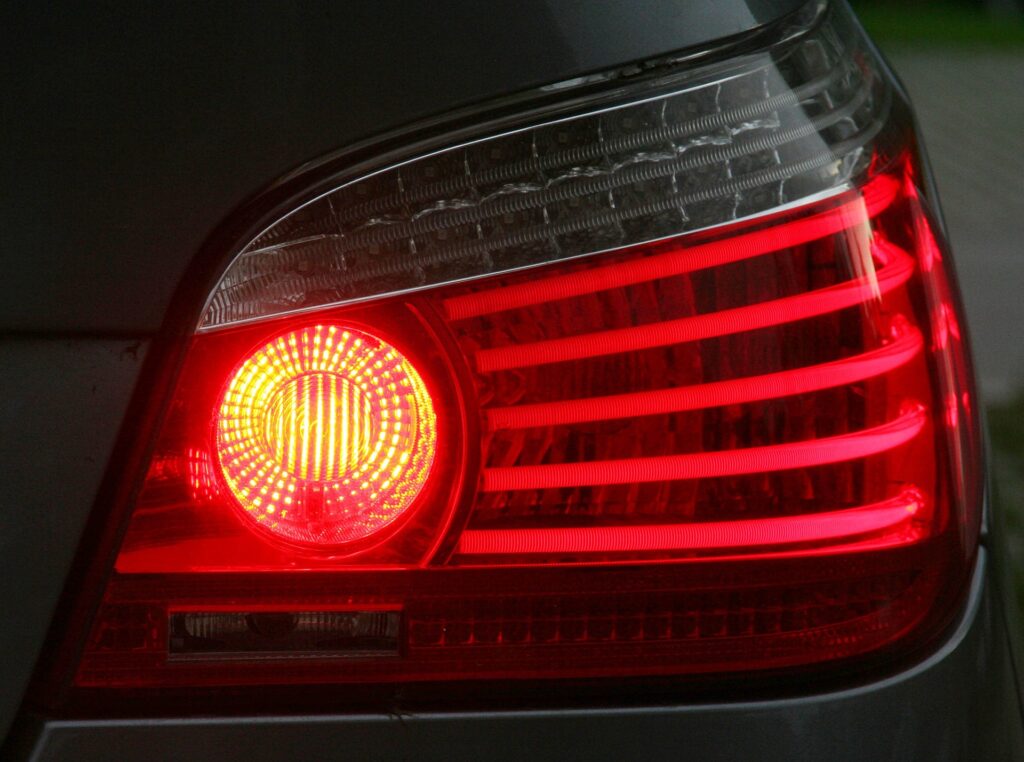

Dear Jamaican drivers,
The following are not decorative art pieces on your car: headlamps, brake lights, and indicators. They serve a purpose and you should ensure that they are functional, and use them.
Your vehicle’s lights are designed to help you stay safe, promote visibility, and communicate your car’s movements with other vehicles on the road. If you have a dead headlamp, a non-functional brake light, or a burnt-out indicator bulb, you could cause an accident. It’s the reason that having a dead bulb or failing to use your indicator is a sure way to earn a traffic ticket or fail any car safety inspection.
It’s also so much easier to replace a bulb or fix a wiring issue than to be hit with traffic fines. Make it a consistent habit to have those lights checked. For those of you who use the indicator, remember that while you’re in the vehicle, you cannot see if the light is actually working. For the brake lights, though you may apply pressure, you won’t actually know if it works because you’re in the vehicle. In some cases, however, you’ll have an idea if the headlamps work based on illumination you may see in front of the vehicle at nights or in low light.

Here is what you need to know about your car lights and what you can do when the bulbs go dark.
CHECK THE INDICATOR LIGHTS
No one enjoys an encounter with someone who refuses to use their indicators. This is for good reasons, as failure to indicate may cause confusion or contribute to an accident. On the other hand, using the turn signal will not be effective if the bulb needs replacement.
Check those bulbs regularly. Park your car at home or some other safe space and turn each of your turn on each signal or press your hazard lights button to set them off at the same time. Exit your vehicle and make sure that all (front and back) your indicator lights are functioning and bright. If you notice a bulb dimming, get it replaced as soon as possible. If it does not work, get the lights checked.

CHECK YOUR BRAKE LIGHTS
Horrible advice: it is best to wait until someone slams in the back of your car to discover that your brake lights are out. Checking the functionality of your brake lights on your own is more challenging than checking the indicators. If possible, it is easiest to check them with someone’s help. Get a friend, partner, neighbour, co-worker, family member, somebody. Press the brakes while they inspect the back of the car or vie versa. If you have no one to help, go to your car care professional to do it for you.
CHECK YOUR HEADLAMPS
Issues with your headlamps are easy to detect. This is because headlamp issues should be apparent to you when you are driving at night or in low light. Driving with a single headlamp presents critical safety issues and may lead to you being ticketed.

Bear in mind that headlamp dimming does not always mean that your bulbs are going out. They are usually made of acrylic, which may oxidise over time as it is exposed to the sun’s ultra violent (UV) rays. The oxidation gives them a foggy, opaque, or yellowish tint. This is made worse by the dirt, dust, chemicals, and debris that can build up over time. If your headlamps are dimming, and your bulbs are in good condition, you may need headlamp restoration.
At the end of the day, please do the simple task of checking those lights. That’s one small step in ensuring increased safety practices for you, your passenger(s), and other road users. If that was not enough to convince you, here’s a reminder of what the fines are under the new Act:
- The fine for no headlamp is J$5,000
- The fine for failing to fit mechanical or illuminated device (no indicator) is J$2,500
- The fine for no brake light is J$5000
Here’s an easy to follow fact sheet, courtesy of the Jamaica Constabulary Force (JCF) on fines under the new Road Traffic Act:
Read stories related to the Road Traffic Act at the links below:
Shake-up! Major requirements for motorcyclists under new Road Traffic Act
New Road Traffic Act is not about punishing people, says Holness
This is the seventh article in the weekly series, ‘Car Care Tips’ where we highlight various aspects of a car, how to provide care and maintenance for optimal performance while ensuring safety. This series may feature your favourite mechanic or others from the motor vehicle industry.
Read the sixth installment of Care Care Tips below:
Car Care Tips | Clean and wash your car
Send feedback to [email protected]







Comments